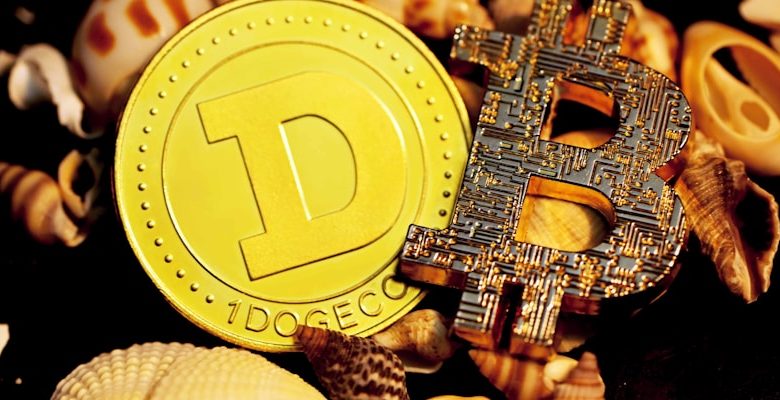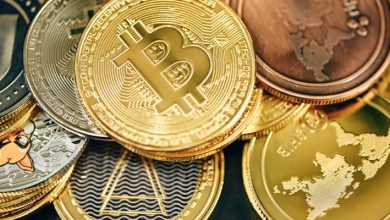The Role of Decentralized Finance (DeFi)

- Understanding the Basics of Decentralized Finance
- The Advantages of Decentralized Finance over Traditional Banking
- Exploring the Top DeFi Platforms in the Market
- Challenges and Risks Associated with DeFi
- The Future of Decentralized Finance: Trends and Predictions
- How to Get Started with DeFi: A Beginner’s Guide
Understanding the Basics of Decentralized Finance
Decentralized finance (DeFi) refers to a system where financial products and services are built on blockchain technology, eliminating the need for traditional intermediaries such as banks. Understanding the basics of DeFi is crucial for anyone looking to explore this emerging field.
One of the key principles of DeFi is the concept of decentralization, which means that there is no central authority controlling the network. Instead, transactions are executed through smart contracts, which are self-executing contracts with the terms of the agreement directly written into code.
Another important aspect of DeFi is the use of decentralized exchanges (DEXs) to trade assets without relying on a centralized exchange. This allows for greater security and transparency, as users retain control of their funds throughout the trading process.
Furthermore, DeFi platforms offer a wide range of financial services, including lending, borrowing, staking, and yield farming. These services are accessible to anyone with an internet connection, providing financial inclusion to individuals who may not have access to traditional banking services.
Overall, DeFi is revolutionizing the way we think about finance by creating a more open, transparent, and accessible financial system. By understanding the basics of DeFi, individuals can take advantage of the opportunities presented by this innovative technology to grow their wealth and participate in a new era of decentralized finance.
The Advantages of Decentralized Finance over Traditional Banking
Decentralized finance (DeFi) offers several advantages over traditional banking, making it an attractive option for those looking to manage their finances in a more efficient and secure manner.
- One of the key benefits of DeFi is the absence of intermediaries, such as banks or financial institutions. This means that users have more control over their assets and can transact directly with one another, without having to rely on a third party.
- Another advantage of DeFi is the transparency it offers. All transactions on the blockchain are visible to anyone, ensuring that there is no room for manipulation or fraud. This level of transparency can help build trust among users and create a more secure financial ecosystem.
- Additionally, DeFi is often more accessible than traditional banking services. Anyone with an internet connection can participate in DeFi, regardless of their location or financial status. This opens up financial opportunities to a wider range of individuals who may not have had access to traditional banking services.
- Furthermore, DeFi platforms typically operate 24/7, allowing users to access their funds and make transactions at any time. This level of convenience is unmatched by traditional banking services, which often have limited operating hours and may take longer to process transactions.
In conclusion, the advantages of decentralized finance over traditional banking make it a compelling option for those looking to take control of their finances and participate in a more transparent and accessible financial system.
Exploring the Top DeFi Platforms in the Market
When it comes to exploring the top decentralized finance (DeFi) platforms in the market, there are several key players that stand out for their innovative solutions and user-friendly interfaces.
One such platform is Compound, which allows users to lend and borrow cryptocurrencies in a decentralized manner. With its automated interest rates and seamless integration with popular wallets like MetaMask, Compound has quickly gained popularity among DeFi enthusiasts.
Another prominent player in the DeFi space is Uniswap, a decentralized exchange that enables users to swap various tokens without the need for an intermediary. Uniswap’s unique automated market maker (AMM) model has revolutionized the way people trade cryptocurrencies, making it a go-to platform for many traders.
Aave is yet another DeFi platform that has been making waves in the industry. Known for its innovative flash loans and money market protocols, Aave provides users with a wide range of borrowing and lending options, all powered by smart contracts on the Ethereum blockchain.
Overall, these top DeFi platforms offer users a glimpse into the future of finance, where traditional intermediaries are replaced by decentralized protocols and smart contracts. As the DeFi ecosystem continues to grow and evolve, these platforms are likely to play an increasingly important role in shaping the way we interact with money and financial services.
Challenges and Risks Associated with DeFi
There are several challenges and risks associated with decentralized finance (DeFi) that users should be aware of before getting involved in this rapidly evolving space.
- Smart contract risk: Smart contracts are the backbone of DeFi platforms, and any vulnerabilities or bugs in the code can lead to significant financial losses for users. It is crucial to thoroughly audit smart contracts before interacting with them to minimize this risk.
- Regulatory uncertainty: Due to the decentralized nature of DeFi, regulatory oversight is limited, leading to uncertainty around compliance and potential legal risks. Users should stay informed about regulatory developments in their jurisdiction to avoid any legal repercussions.
- Market volatility: DeFi platforms are often built on blockchain networks that are susceptible to extreme price fluctuations. Users should be prepared for sudden market crashes and be cautious when investing in volatile assets.
- Liquidity risks: Some DeFi platforms may suffer from low liquidity, making it difficult for users to enter or exit positions quickly. This can result in slippage and unfavorable trading conditions, impacting the overall user experience.
- Security breaches: DeFi platforms are prime targets for hackers due to the large sums of money involved. Users should take necessary precautions such as using hardware wallets and implementing strong security measures to protect their funds from potential security breaches.
While DeFi offers exciting opportunities for financial innovation and inclusion, it is essential to approach this space with caution and be aware of the risks involved. By staying informed and practicing good risk management, users can navigate the challenges of DeFi and make the most of its potential benefits.
The Future of Decentralized Finance: Trends and Predictions
Looking ahead, the future of decentralized finance (DeFi) appears to be promising, with several key trends and predictions emerging in the space. One such trend is the increasing popularity of yield farming, where users can earn passive income by providing liquidity to DeFi protocols. This trend is expected to continue growing as more users become aware of the potential returns.
Another trend to watch is the rise of decentralized exchanges (DEXs), which allow users to trade cryptocurrencies directly with one another without the need for a centralized intermediary. This shift towards peer-to-peer trading is likely to gain momentum as users seek greater control over their assets and transactions.
Furthermore, the integration of non-fungible tokens (NFTs) into DeFi platforms is anticipated to be a significant development in the coming years. NFTs have already gained traction in the art and gaming industries, and their integration into DeFi could open up new opportunities for tokenization and asset ownership.
As DeFi continues to evolve, it is also predicted that scalability and interoperability will be key focus areas for developers. Scalability solutions such as layer 2 protocols and cross-chain interoperability are expected to address the current limitations of DeFi platforms, enabling greater efficiency and usability for users.
In conclusion, the future of DeFi is likely to be characterized by continued innovation and growth, driven by trends such as yield farming, decentralized exchanges, NFT integration, scalability, and interoperability. As the ecosystem expands and matures, DeFi has the potential to revolutionize traditional finance and empower individuals with greater financial freedom and control.
How to Get Started with DeFi: A Beginner’s Guide
To get started with DeFi, you first need to understand the basics of decentralized finance and how it differs from traditional financial systems. DeFi operates on blockchain technology, allowing for peer-to-peer transactions without the need for intermediaries like banks. This provides greater security, transparency, and control over your finances.
One of the first steps to enter the world of DeFi is to set up a digital wallet to store your cryptocurrencies. Popular options include MetaMask, Trust Wallet, and Ledger Nano S. Once you have a wallet, you can start exploring different DeFi platforms and protocols to invest, lend, borrow, or trade digital assets.
Research is key when navigating the DeFi space. Make sure to understand the risks involved, as the decentralized nature of these platforms means there is no central authority to oversee transactions. It’s essential to diversify your investments and only allocate funds that you can afford to lose.
Joining DeFi communities and forums can also be beneficial for beginners. You can learn from experienced users, stay updated on the latest trends, and get valuable insights into potential investment opportunities. Networking in the DeFi space can help you build connections and grow your understanding of this rapidly evolving ecosystem.



